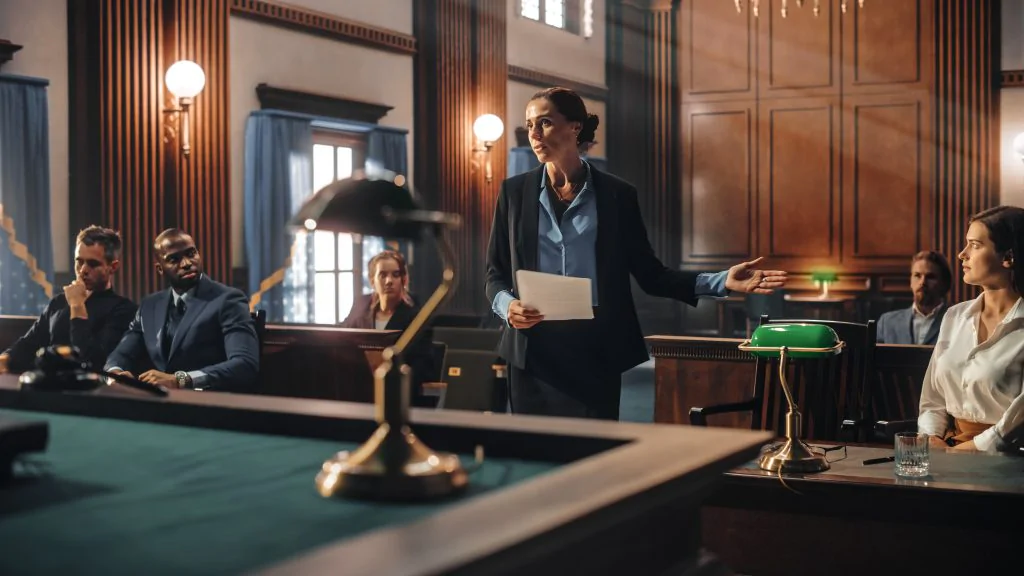Vision loss is always a risk of ocular surgery. But patients never expect to lose their vision when they go to the hospital for surgery that involves their heart, spine, or other body parts unrelated to the eyes. Even so, thousands of people suffer from postoperative vision loss every year, even though their eyes were not involved in their surgeries.
Vision loss after non-eye surgery can be an overwhelming and life-changing experience. Fortunately, there are medical malpractice systems in place that help victims receive compensation for their loss of vision, as well as other damages related to their injuries.
New Yorkers and Eye Health
Eye and vision problems are common. But it is especially unfortunate when those problems get worse or progress to total blindness due to the negligence of a medical practitioner or improper surgical procedures. For example, the New York State Department of Health (NYSDOH) indicates that, for all New Yorkers aged 40 years or older:
- 14.9% have some distance vision impairment
- 4.1% have lower quality eyesight related to their age
- 19% have cataracts
- 5.3% have glaucoma
- 2.9% have diabetic retinopathy, or reduced vision from diabetes
- In total, over 3.5 million people in the United States over the age of 40 have one or more visual impairments.
How Does Vision Loss After Non-Eye Surgery Occur?
There are many surgeries that can tangentially affect eyesight or eye health due to side effects of an operation, and/or because of how the body’s various systems work together in ways that involve vision.
For example, patients who undergo heart and spine surgery must be placed under anesthesia, which can affect blood throw throughout the body. This can, if performed improperly, result in not enough oxygenated blood getting to the optic nerves, resulting in vision loss. In fact, this condition has a name: “optic neuropathy,” or ION. The Journal of Anesthesia & Clinical Research found that this was the most common kind of postoperative vision loss experienced by patients who had heart or spine surgery, affecting about 0.3% of patients undergoing these procedures.
That may sound like a small number but given that hundreds of thousands to millions of people undergo these surgeries every year, it results in hundreds of cases.
Another study from the University of Chicago’s Department of Anaesthesia and Critical Care investigated perioperative visual loss (POVL) cases, and found the following to be the main causes of vision loss after surgery:
- Retinal vascular occlusion
- Ischemic optic neuropathy
In other words, it was due to improper surgical procedures or mistakes on the part of the medical practitioners. Both of the above side effects are caused by a lack of oxygen, blood, or nutrients to the optic nerves during surgeries.
However, POVL can also occur due to other surgical mistakes, including:
- A surgeon could improperly treat a patient’s spinal tissue or other nerve tissue. Since the spinal cord is connected to all the nerves in the body, including the eyes, a mistake (like a sliced nerve) could lead to blindness or further vision impairment—even if the surgery had nothing to do with eyesight in the first place.
- Neurosurgery is also risky, both in general and for potential vision loss. The brain controls eyesight to a massive degree, and any mistakes during a neurosurgical procedure could result in blindness or vision loss.
The bottom line: vision loss is always a possibility, even when a patient undergoes non-ocular surgery. Fortunately, victims of these types of malpractice incidents have legal recourse.
Is Vision Loss After Non-Eye Surgery Medical Malpractice?
Sometimes. To show medical malpractice, New York practice attorneys must prove several things to distinguish the events as negligent, which means the doctor or hospital in question did not provide an adequate level of care. In such cases, “adequate” is usually measured by what other respectable doctors or institutions provide their patients.
For example, a “negligent” doctor during a non-ocular surgery might fail to monitor the patient’s blood flow or heart rate. Failing to do so could result in a lack of oxygenated blood going to the eyes and brain, which could lead to later complications and loss of eyesight.
Since monitoring a patient’s heart rate and blood flow during surgery is a standard procedure at all hospitals for virtually all procedures, the doctor in this example would have been negligent.
For a POVL case to be medical malpractice, prosecutors must prove:
- That a relationship between the victim and the doctor existed
- That the doctor was negligent per the above definition
- The negligence directly caused the injury
- The injury led to certain damages
Thus, a medical malpractice case often requires an in-depth investigation of the circumstances surrounding the surgery, along with an investigation of records and medical files. For these reasons, New York medical malpractice attorneys can be of great assistance to any victim of these circumstances.
Why Does Vision Loss During Non-Ocular Surgery Occur?
In medical malpractice cases, the reasons for the malpractice can vary based on the doctor and the circumstances of the case. For instance:
- A surgeon may be very busy during a procedure, hurrying and ultimately making a mistake
- A nurse or someone else in the room may fail to monitor a patient’s blood flow or heart rate, such as in the example above, due to a personal distraction or lack of training. In such cases, the hospital may ultimately be liable for a patient’s vision loss
- A doctor could be inebriated or distracted during surgery, resulting in mistakes that ultimately cost a patient their eyesight
Compensation from Vision Loss Medical Malpractice Cases
Should a medical malpractice case for postoperative vision loss go to trial or be settled, victims may receive a number of damages to compensate them for their suffering and other damages. Compensation may cover:
- The cost for medical bills, both for the surgery that led to the vision loss and any future medical bills
- Cost for future medical care if blindness or vision loss results in significant impairment
- Damages for pain and suffering, and for loss of quality of life
- Costs for home improvements or adjustments that may be necessary for the victim to continue living their life
- Loss of income if the blindness or vision loss prevents the victim from continuing to work
Contact New York Medical Malpractice Attorneys Today
Maximizing the compensation received during medical malpractice cases such as these is contingent on ensuring an airtight investigation and securing an effective prosecution team.
Sobo & Sobo have dealt with hundreds of medical malpractice cases for over 50 years and have the knowledge and insight to help anyone who’s lost their vision because of a non-ocular surgery receive what they deserve. Victims can contact them online or call 855-468-7626 today for a free consultation.




